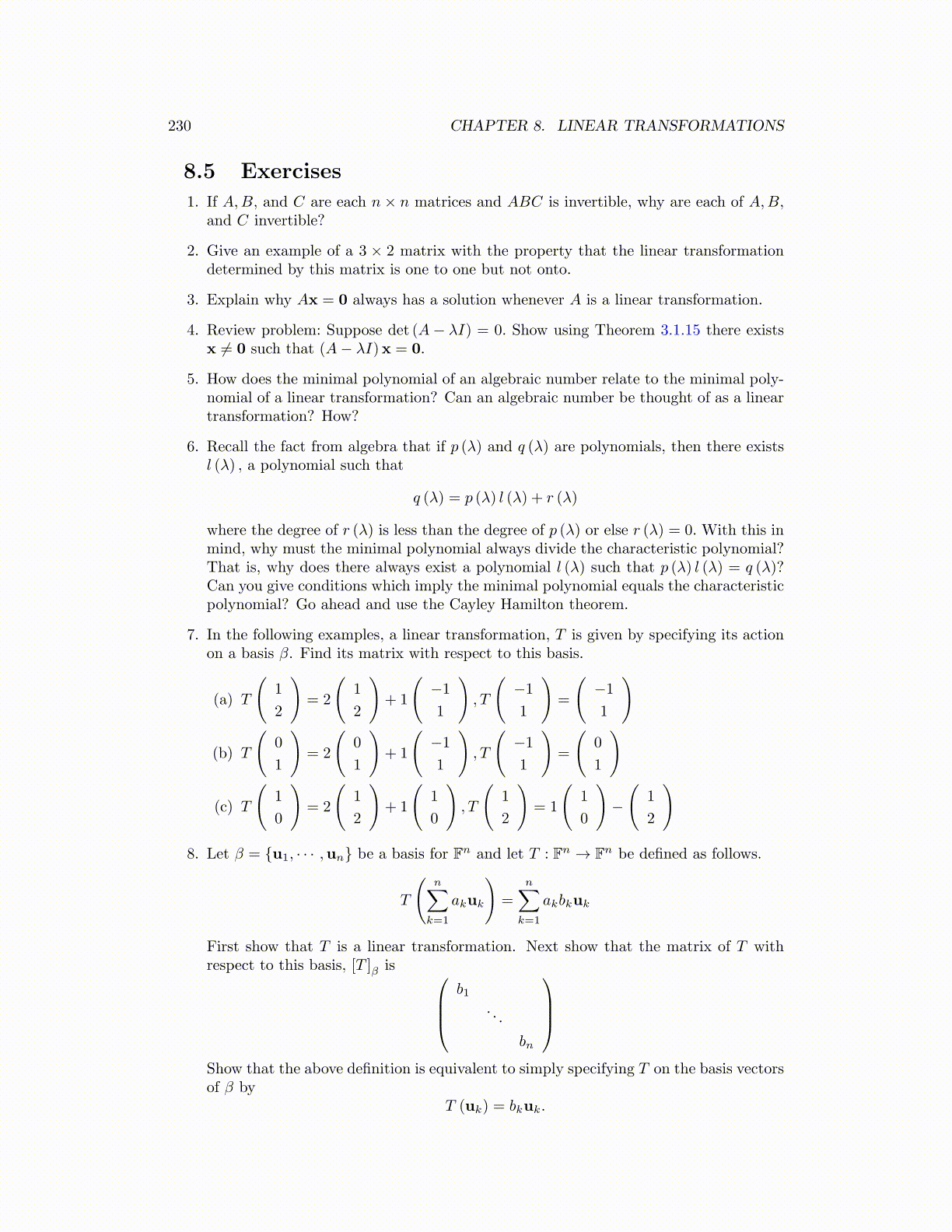
230 CHAPTER 8. LINEAR TRANSFORMATIONS
8.5 Exercises
1. If A,B, and C are each n× n matrices and ABC is invertible, why are each of A,B,and C invertible?
2. Give an example of a 3 × 2 matrix with the property that the linear transformationdetermined by this matrix is one to one but not onto.
3. Explain why Ax = 0 always has a solution whenever A is a linear transformation.
4. Review problem: Suppose det (A− λI) = 0. Show using Theorem 3.1.15 there existsx ̸= 0 such that (A− λI)x = 0.
5. How does the minimal polynomial of an algebraic number relate to the minimal poly-nomial of a linear transformation? Can an algebraic number be thought of as a lineartransformation? How?
6. Recall the fact from algebra that if p (λ) and q (λ) are polynomials, then there existsl (λ) , a polynomial such that
q (λ) = p (λ) l (λ) + r (λ)
where the degree of r (λ) is less than the degree of p (λ) or else r (λ) = 0. With this inmind, why must the minimal polynomial always divide the characteristic polynomial?That is, why does there always exist a polynomial l (λ) such that p (λ) l (λ) = q (λ)?Can you give conditions which imply the minimal polynomial equals the characteristicpolynomial? Go ahead and use the Cayley Hamilton theorem.
7. In the following examples, a linear transformation, T is given by specifying its actionon a basis β. Find its matrix with respect to this basis.
(a) T
(1
2
)= 2
(1
2
)+ 1
(−1
1
), T
(−1
1
)=
(−1
1
)
(b) T
(0
1
)= 2
(0
1
)+ 1
(−1
1
), T
(−1
1
)=
(0
1
)
(c) T
(1
0
)= 2
(1
2
)+ 1
(1
0
), T
(1
2
)= 1
(1
0
)−
(1
2
)
8. Let β = {u1, · · · ,un} be a basis for Fn and let T : Fn → Fn be defined as follows.
T
(n∑
k=1
akuk
)=
n∑k=1
akbkuk
First show that T is a linear transformation. Next show that the matrix of T withrespect to this basis, [T ]β is
b1. . .
bn
Show that the above definition is equivalent to simply specifying T on the basis vectorsof β by
T (uk) = bkuk.